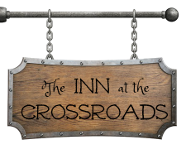“When they woke the next morning, the fire had gone out and the Liddle was gone, but he’d left a sausage for them, and a dozen oatcakes folded up neatly in a green and white cloth. Some of the cakes had pinenuts baked in them and some had blackberries. Bran ate one of each, and still did not know which sort he liked the best.” -A Storm of Swords
Thoughts:
While we liked both of these recipes, the traditional version really matched what we imagined from the book. They are a unique combination of crisp and soft, dry and moist. Because of their texture, they are wonderful with tea, or on a hike. We also liked the contrasting colors that resulted from mixing the blackberries in with the dough. We’d like to nibble them while out in the countryside, followed by a drink from a cold mountain stream. However, we’re glad we aren’t relying on them during a mad survival dash for The Wall…
Both recipes are available in The Cookbook!














